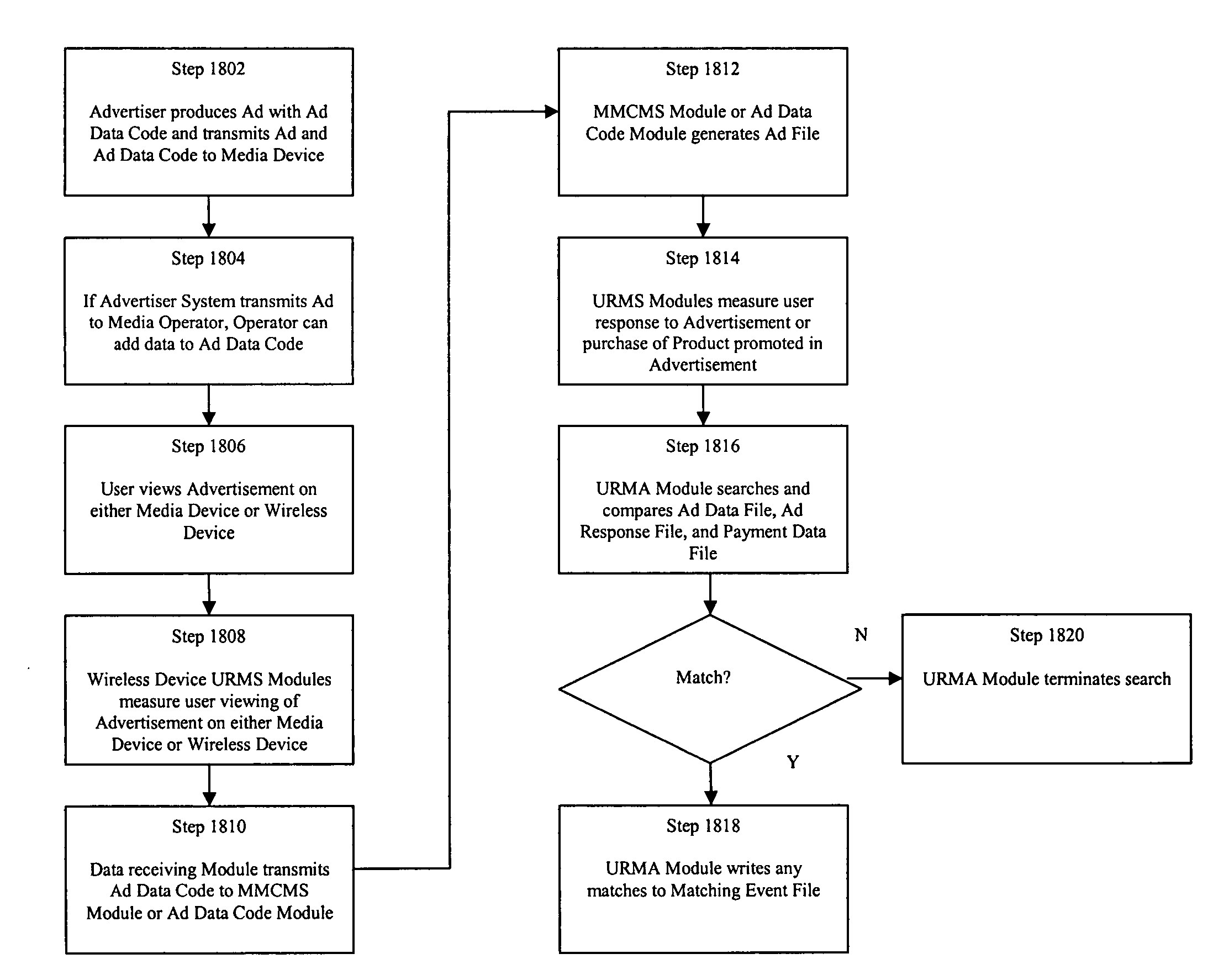Systems, methods, and computer program products for enabling an advertiser to measure user viewing of and response to an advertisement
a technology of advertising effectiveness and measurement method, applied in the field of measuring the effectiveness of advertising, can solve the problems of advertisers not being able to distribute unique advertisements, advertisers currently produce advertisements with limited feedback from actual users, and advertisers recognize the disadvantages of measuring what users think
- Summary
- Abstract
- Description
- Claims
- Application Information
AI Technical Summary
Benefits of technology
Problems solved by technology
Method used
Image
Examples
Embodiment Construction
OUTLINE
[0102] 1. Data Processing Unit
[0103] 2. Measuring User Viewing of and Response to Advertisements [0104] 2.1 Architecture [0105] 2.1.1 Advertisement Information [0106] 2.1.2 Media Device & Wireless Device [0107] 2.1.2.1 Media Devices [0108] 2.1.2.2 Wireless Device [0109] 2.1.2.2.1 I-O Devices [0110] 2.1.2.3 User Response Measurement System (URMS) [0111] 2.1.2.3.1 Ad Data Code Module & Payment Code Module [0112] 2.1.2.3.2 Data Storage [0113] 2.1.2.3.3 User Response Measurement Analysis [0114] 2.1.2.3.4 Exemplary Implementation of URMS [0115] 2.1.2.4 Multiple Media Channel Measurement System (MMCMS) [0116] 2.1.3 Payment Architecture [0117] 2.2 Methods [0118] 2.2.1 Examples [0119] 2.2.1.1 Measurement of User Viewing Advertisement on Television Media Device [0120] 2.2.1.2 Measurement of User Viewing Advertisement on Personal Computer Media Device [0121] 2.2.1.2.1 Methods for Reception of Ad Data Code [0122] 2.2.1.2.1.1 Advertiser Transmission [0123] 2.2.1.2.1.2 Third Party URL Tr...
PUM
 Login to View More
Login to View More Abstract
Description
Claims
Application Information
 Login to View More
Login to View More - R&D
- Intellectual Property
- Life Sciences
- Materials
- Tech Scout
- Unparalleled Data Quality
- Higher Quality Content
- 60% Fewer Hallucinations
Browse by: Latest US Patents, China's latest patents, Technical Efficacy Thesaurus, Application Domain, Technology Topic, Popular Technical Reports.
© 2025 PatSnap. All rights reserved.Legal|Privacy policy|Modern Slavery Act Transparency Statement|Sitemap|About US| Contact US: help@patsnap.com



